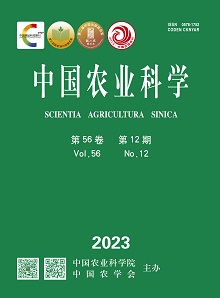【Objective】 From the 2009-2010 wheat growing season, four cultivation modes were designed and set up. The effects of cultivation modes on soil physical and chemical properties, nitrogen nutrition index of winter wheat, nitrogen supply and demand balance in wheat field, uptake and utilization of nitrogen and grain yield were investigated, in order to provide a theoretical guidance for further optimizing the soil-crop system integrated management mode.【Method】Four cultivation modes were designed: local farmer mode (T1), improvement mode based on farmers (T2), high-yield and higher-yield mode regardless of production cost (T3), and soil-crop system integrated management mode (T4).【Result】After 13 wheat-maize growing seasons, the soil bulk density of surface soil for T1, T2, T3 and T4 modes decreased by 6.21%, 9.80%, 12.25% and 13.56%, respectively; the content of organic matter for four modes increased by 21.88%, 26.80%, 32.05% and 36.39%, respectively; the corresponding increases were 34.16%, 12.38%, 39.60% and 20.79% for the contents of total nitrogen; 47.85%, 48.87%, 74.49% and 62.21% for the contents of alkali-hydrolysable nitrogen, respectively; 62.73%, 36.56%, 297.93% and 68.68% for the contents of available phosphorus; 14.36%, 40.00%, 221.20% and 59.60% for the contents of available potassium, respectively. The increases of 33.96%, 10.32%, 52.77% and 19.49% were observed in the inorganic nitrogen accumulation in the 0-100 cm soil layer, respectively. Correspondingly, the pH for T1, T2, T3 and T4 modes decreased from 7.50 to 6.28, 6.68, 5.35 and 6.64, respectively. There were significant differences in grain yield and nitrogen uptake and utilization among the four cultivation modes in 2020-2022 growing season. Compared with T1 mode, the grain yield of T2, T3 and T4 modes increased by 14.14%, 27.65% and 22.52%, respectively; the nitrogen use efficiency increased by 54.80%, 19.97% and 49.15%, respectively; the nitrogen recovery efficiency increased by 72.95%, 37.54% and 48.15%, respectively; the nitrogen surplus decreased by 49.76%, 11.62% and 44.14%, respectively; the nitrogen surplus rate decreased by 24.63%, 11.62% and 26.68%, respectively. The whole plant at anthesis stage and spikes at maturity stage under T4 mode were in nitrogen supply and demand balance.【Conclusion】After 13 wheat-maize growing seasons, the soil acidification trend of 0-20 cm was obvious, and the bulk density of surface soil decreased, but the contents of organic matter, total nitrogen and available nutrients such as nitrogen, phosphorus, potassium increased for the all four cultivation modes. Meanwhile, the accumulation of inorganic nitrogen in 0-100 cm soil layer increased accordingly. Compared with other three cultivation modes, a synergistic improvement was obtained under T4 mode in soil physicochemical properties, wheat grain yield and nitrogen use efficiency. However, the nitrogen use efficiency at present under T4 mode was not high enough and still needed to be further improved. As showed by present study, further synergistic optimization in grain yield and nitrogen use efficiency could not be achieved only by reducing nitrogen input.









